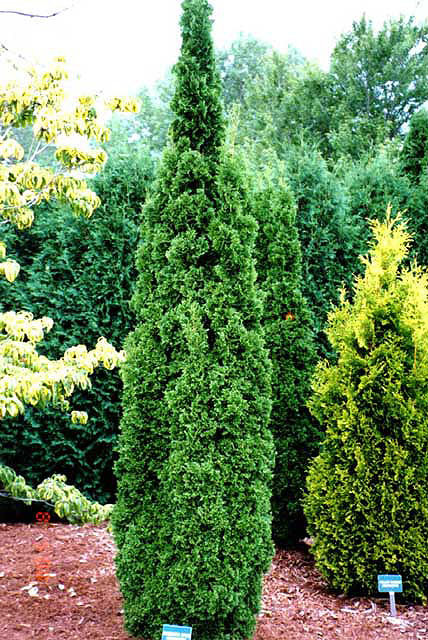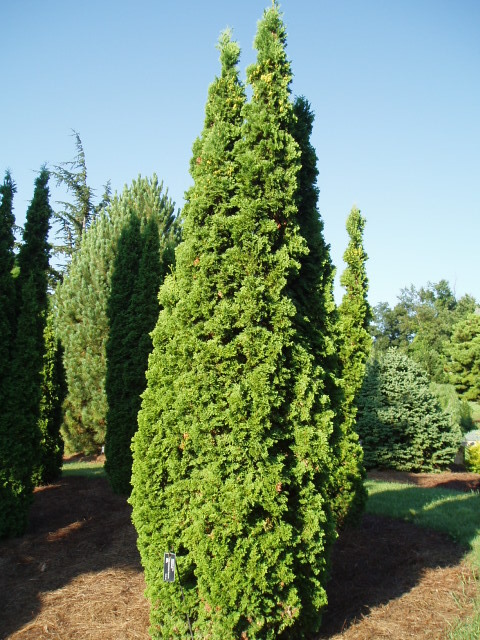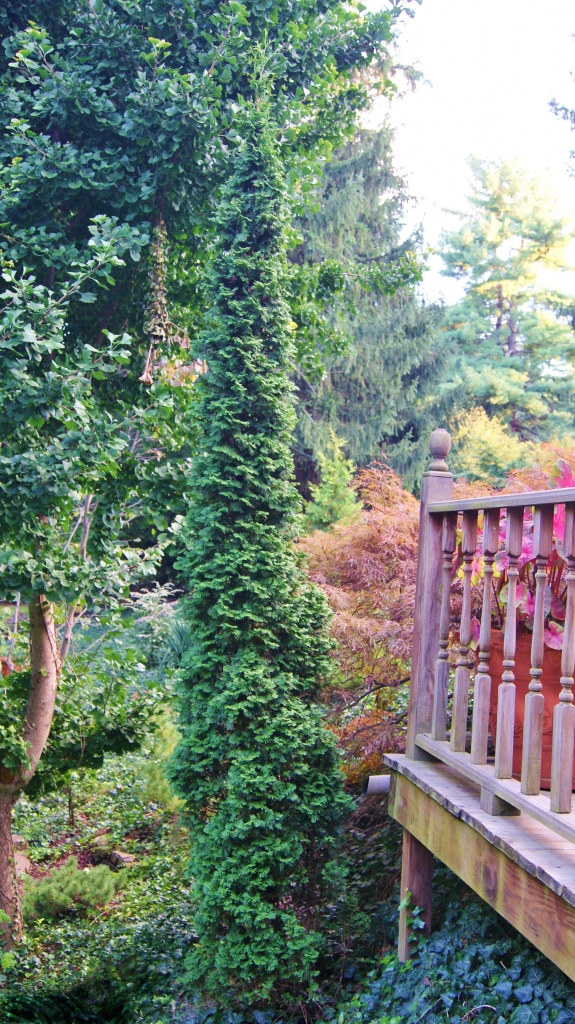Also known as 'Degroot's Emerald Spire' or most often seen with the incorrect spelling, 'Degroot's Spire.'
Thuja occidentalis 'DeGroot's Spire' is a narrow, upright, very fastigiate form of eastern arborvitae with medium-green, twisted foliage. The outline is less smooth and symmetrical than most other upright arborvitae making it even more interesting. Foliage tends to turn to a dark mossy-green to true bronze color in midwestern U.S. winters. Typical rate of growth most areas is about 6 inches (15 cm) a year, resulting in a narrow upright tree 3 feet (1.5 m) tall by 15 inches (40 cm) wide after 10 years in the landscape. This cultivar is quite suitable as a solitary exclamation point in the garden or for use as a formal hedge.
[ Iseli Nursery Inc] This narrow columnar form of American arborvitae is unique both for its form and refined texture.
Constant DeGroot (1922-1971), longtime production and propagation manager at Sheridan Nurseries, Toronto, Ontario, Canada selected this cultivar from a batch of seedlings in 1970. Sheridan introduced it in 1980, naming it for the finder. Iseli Nurseries, Inc. of Boring, Oregon is credited with the U.S. introduction around the same time. (History based on an email conversation (10/01/14) between Larry Sherk, retired Chief Horticulturist at Sheridan Nurseries and David Olszyk, ConiferBase editor.



